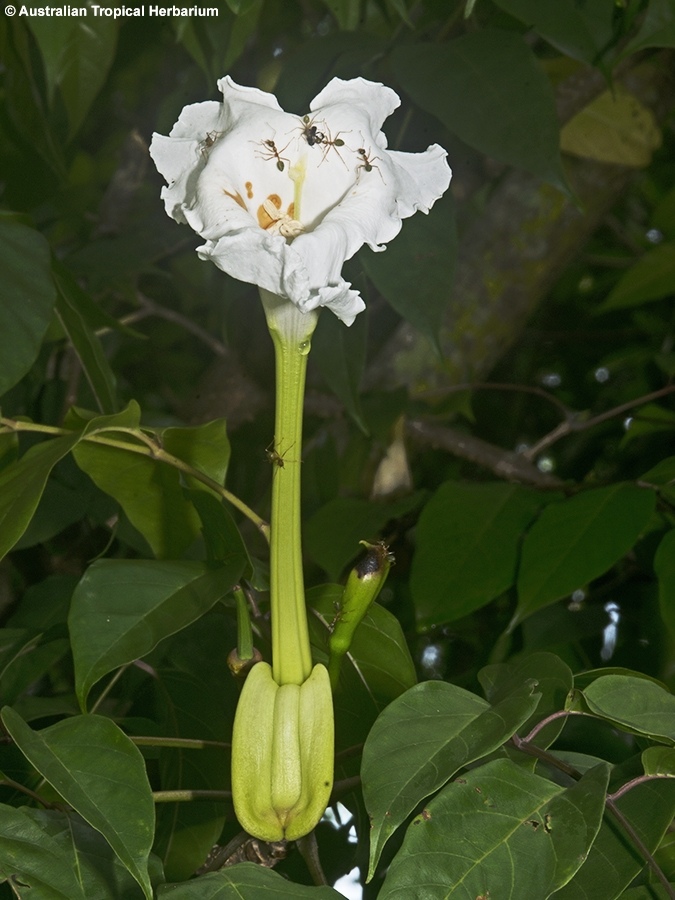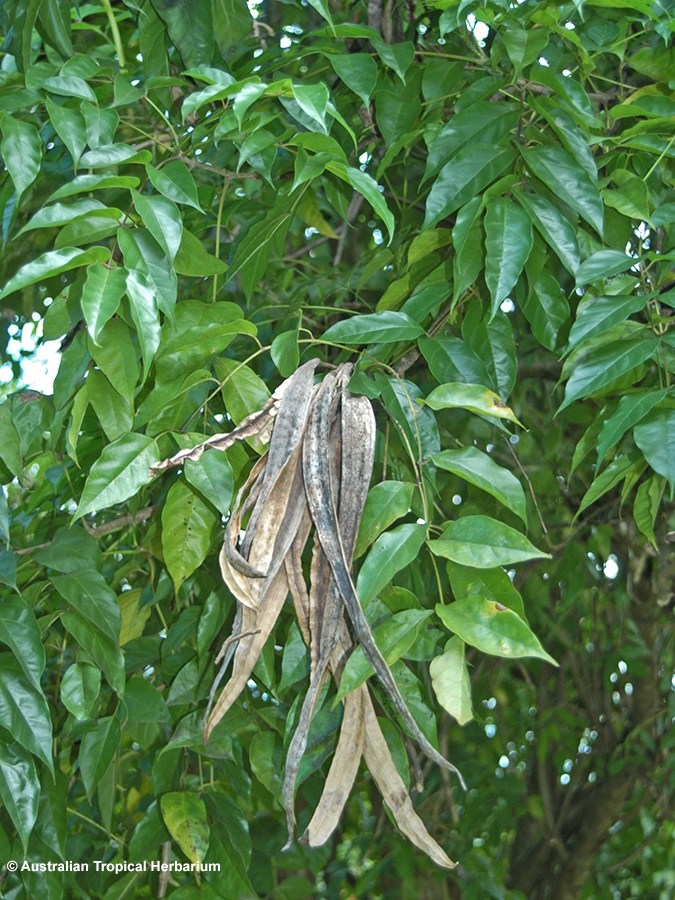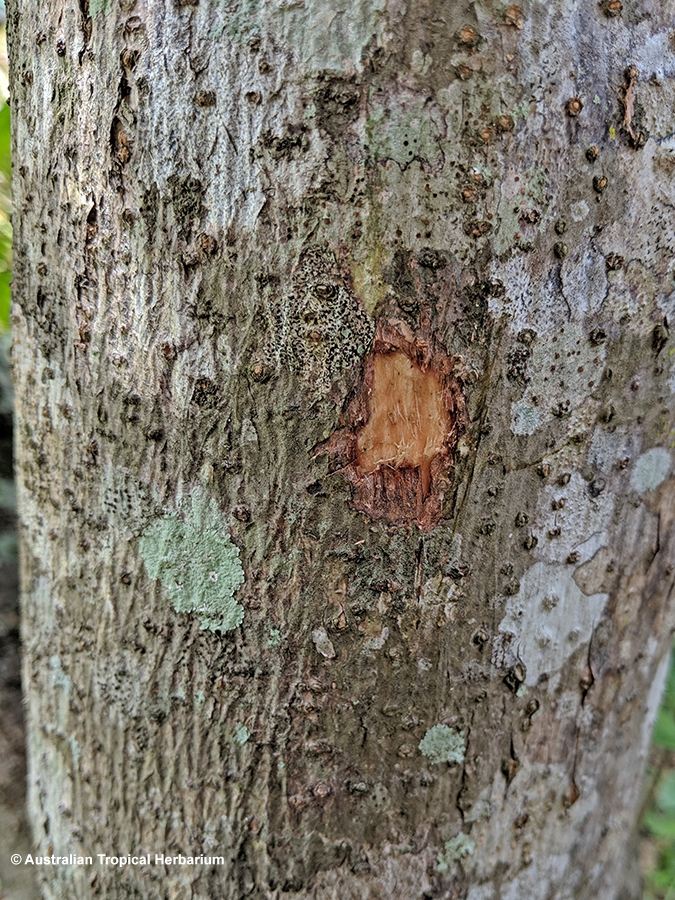Australian Tropical Rainforest Plants - Online edition
Dolichandrone spathacea (L.f.) K.Schum.







Schumann, K.M. & Hollrung, M. (1889) Die Flora von Kaiser Wilhelms Land: 123.
Mangrove Trumpet Tree; Tui
Tree up to 25 m high. Bark grey to dark brown, furrowed, lenticels elliptical, prominent on twigs.
Leaves compound, opposite to subopposite, usually imparinnate with 9–11 leaflets, rachis to ca. 30 cm long; petiole ca. 8 cm long, lenticels prominent, petioles and rachis furrowed on upper surface. Leaflets opposite, lanceolate to ovate lanceolate, membraneous, terminal leaflet 10–17 cm long, 4–5 cm wide, laterals smaller, base asymmetrical, apex acuminate, midrib depressed on adaxial surface, peltate scales present on both surfaces when young, 0–5 extrafloral nectaries on abaxial surfaces, occasional on adaxial, domatia present as hair tufts.
Inflorescence a terminal raceme, peduncle 1.5–3 cm long. Flowers fragrant; pedicel at maturity 3–4 cm long; calyx 7–7.5 cm long including reflexed apex, extrafloral nectaries densely packed resulting in a black appearance; corolla white, tube ca. 16 cm long, extrafloral nectaries prominent on upper expanding portion of the tube and base of lobes, lobes spreading 5 cm long, 4 cm wide; stamens 4, epipetalous, dimorphic, filaments ca. 25 mm long, anthers 3–4 mm with bases widely diverging, staminode 7–10 mm long, ovary up to 10 mm long, nectary prominent at base, style 16–17 mm long, stigma bilobed, stigmatic arms up to 6 mm long.
Features not available.
Occurs in CYP, particularly near the Olive River. Grows on sandy substrates in riverine forest, often associated with mangroves. Also occurs from India through SE Asia to the Solomon Islands and New Caledonia.
Bignonia spathacea L.f., Supplementum Plantarum: 283 (1782). Type: Asia et Tropical Australia, 1777, J.G. Koenig s.n. (LINN-HS1048-24, image) (Fig. 9).





